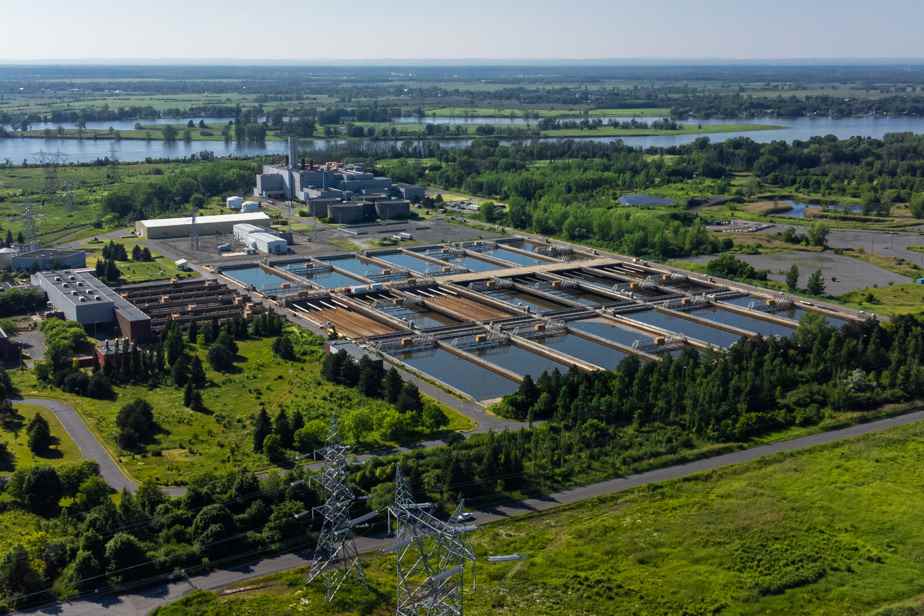The historic droughts of the summer of 2022 prove it: we will have to learn how to reuse wastewater, warned the European Commission in August. Even in Quebec, where in places the scarcity of water is beginning to cause serious headaches, this idea is timidly gaining ground.
Posted at 5:00 a.m.
Benoit Barbeau, professor at Polytechnique Montréal and specialist in water treatment, says he has already had a drink from recycled wastewater from Singapore, a great champion in water treatment. “She was very good. If I hadn’t known, I wouldn’t have noticed. »
Like what is possible. Including in Quebec, says Benoit Barbeau. Technologically, we know how to do it – we could very well turn sewage waste into drinking water. “The biggest challenge, says Mr. Barbeau, is the regulations in place in Quebec, which are not designed for this. »

PHOTO FRANÇOIS ROY, THE PRESS
Benoit Barbeau, professor at Polytechnique Montréal and water treatment specialist
“And of course, there are always economic issues. It would double the cost of water treatment, he explains. The question: how much are people willing to pay? »
Yes, it would be expensive, but to put things in perspective, Mr. Barbeau pointed out that if we took the billions earmarked for the construction of a third link in Quebec City, water purification would be significantly higher than the current situation. “And we could seriously tackle the problem of micropollutants present in wastewater in Quebec,” he adds.
Because in the province, a problem remains: pharmaceutical products are still not eliminated by the treatment channels and therefore end up in the waterways.
A step is at least being taken in Montreal, where major work is underway at the East Montreal wastewater treatment plant to implement an ozone disinfection process, which will considerably improve the quality of the water treated by the plant. “It will soon be possible to eliminate almost all viruses, bacteria, but also pharmaceutical products from the water that will be treated there”, announces the City, which expects that everything will be finished in 2025.

PHOTO FRANÇOIS ROY, LA PRESSE ARCHIVES
Montreal East Wastewater Treatment Plant
The water will thus be cleaner, specifies Hugo Bourgoin, media relations at the City, but not enough for it to be good for consumption.
In Montreal, the question arises in purely environmental terms, water being very abundant. But in places, it is downright lacking.
In Saint-Rémi, on the South Shore, the municipality had to resort to buying water in large tanker trucks.
In Saint-Lin–Laurentides, where residential construction has taken place at breakneck speed, access to drinking water was the big issue in the 2021 municipal elections. In May, the City decreed that prohibited watering the lawn, filling the swimming pool at all times and using water to wash a yard, a car, a trailer, a boat, etc.
Some progress
In Europe, regulatory and financial incentives could ensure that more than 6 billion cubic meters of non-potable treated wastewater will be reused each year by 2025, says the European Commission.
In Quebec, we are far from the mark, despite some progress.
In Saint-Esprit, in Lanaudière, the scarcity of water led the Olymel pig slaughtering and cutting plant, which drew 1,300 to 1,500 cubic meters per day directly from the water table, to innovate. With the help of the firm Axor (today FNX INNOV) and after numerous steps to have the regulations authorize it, the factory has been reusing 30% of the water since 2014.
In Vancouver, says Yves Comeau, professor at Polytechnique Montréal and wastewater specialist, “the heat from wastewater is used to heat residential and institutional buildings”.
Some researchers are also studying the possibility of reusing yellow water (urine) to extract nitrogen and phosphorus as agricultural fertilizers. But there again, the presence of the pharmaceutical compounds that are there raises concerns, underlines Mr. Comeau.
In Saint-Hyacinthe, moreover, we make sure to extract energy resources from wastewater. The City is pleased to be “one of the first cities in North America to produce biogas from the organic residues of the region’s agri-food companies. The methane thus produced is used, among other things, to develop vehicles and municipal buildings”.
Nevertheless, today, almost all of the wastewater that has been treated is discharged into rivers and lakes, which makes it at least “indirect reuse”, he observes.
A big waste
The portrait, in Quebec, generally remains one of great waste, starting with Montreal. From the outset, leaks in the water distribution network caused us to lose 26.2% of the water emanating from drinking water treatment plants, according to the 2020 water use report for the City of Montreal.
Per capita, Montrealers also consume the equivalent of 729 L per person per day.
In comparison, observes Yves Comeau, Haiti is at 15 L of water per person per day and Mozambique at 5 L of water per person per day, which is well below the minimum amount of water needed. to the satisfaction of basic needs.
Learn more
-
- At 3e rank
- In terms of average flow, the Rivière-des-Prairies wastewater treatment plant is one of the largest in the world (after those in Cairo and Chicago).
Source: Yves Comeau, professor at Polytechnique Montréal and wastewater specialist

